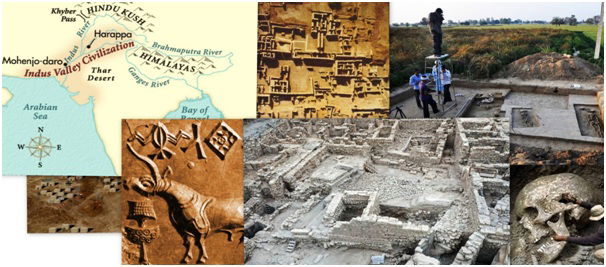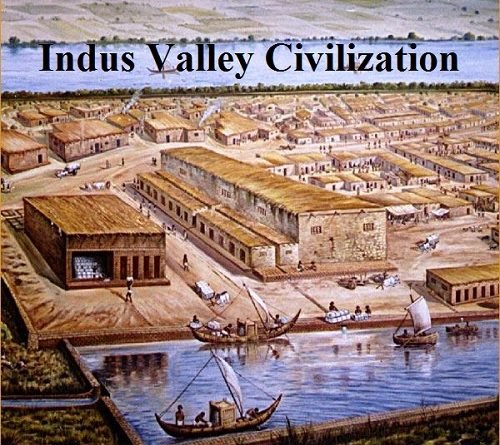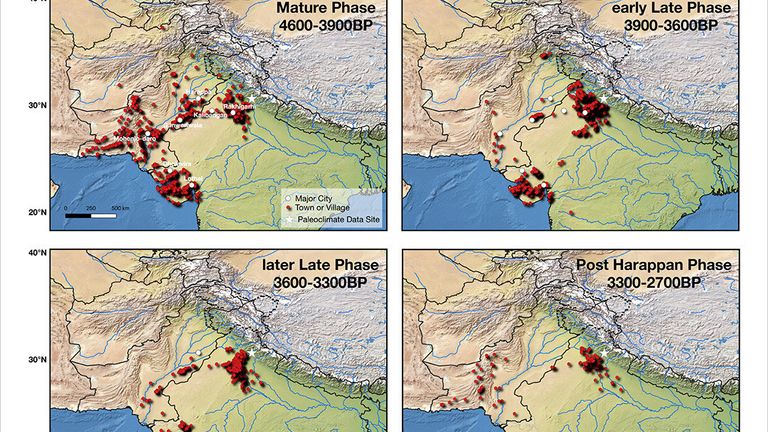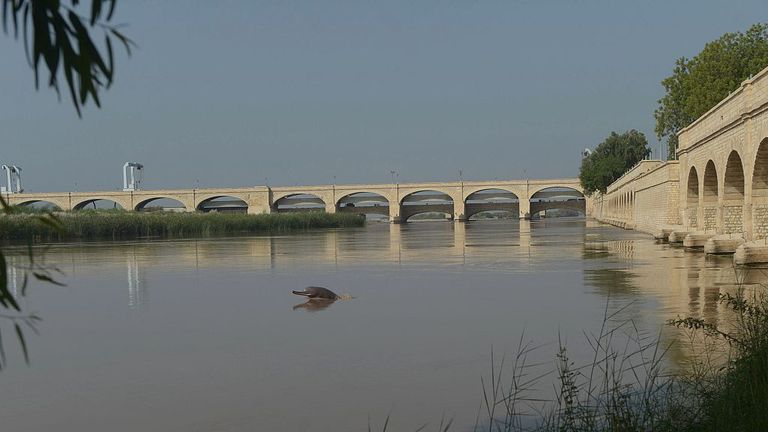Climate change behind rise and fall of ancient Indus Valley Civilization, says study


The advanced Bronze Age civilisation lasted for 2,000 years and there are multiple theories about why it declined.

Climate change caused the rise and fall of the ancient Indus Valley Civilisation, according to a new mathematical model of monsoon patterns.
The civilisation existed in the basins of the Indus River – spanning modern day northeast Afghanistan, most of Pakistan and northwestern India – and was contemporaneous with ancient Egypt and Mesopotamia.
It lasted for around 2000 years, until 1300 BC, are there are many competing hypotheses for its decline.

Dr Nishant Malik, from the Rochester Institute of Technology in New York state, has come up with a new theory by developing a mathematical model of monsoon rainfall in the region over the past 5,700 years.
His model applied dynamical systems theory to paleoclimate data – for instance data on rainfall based on the presence of a particular isotope in stalagmites in a cave.
He has provided mathematical proof that the Indus Valley Civilisation flourished inbetween two major shifts in monsoon patterns.

Just before the dawn of the civilisation, the rainfall pattern changed and provided the critical conditions necessary to sustain human life and nurture it.
DISCLAIMER: The author is solely responsible for the views expressed in this article. The author carries the responsibility for citing and/or licensing of images utilized within the text.
